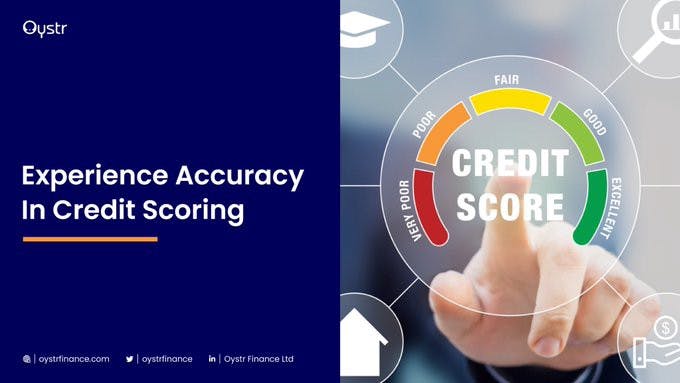Fintech has caused a great deal of anxiety among financial institutions in Africa. However, they have outstanding and crucial benefits to customers’ everyday lives right from the beginning.
Their growth has spurred financial institutions into action, as those collaborating with innovative fintech continue to thrive.
Financial Institutions and Fintechs (Oystr)
According to a study in 2015, 83% of professionals in the financial sector heard that they would lose their businesses and customers to Fintech startups.
There is no doubt that Fintech has altered the operation of the financial industry. Institutions that embrace the power of fintech would stay on a good path to success. Technology is indeed an ‘unstoppable force’, and It is one of the biggest opportunities for Financial Institutions to upgrade the way they deliver services and products.
What Do Fintechs Have To Offer?
Fintech is an establishment of new technology that aims to improve and automate the delivery and use of financial services.
Majorly, Fintech assists organizations, business owners and consumers to better manage their financial operations.
Fintech was originally the use of computer technology to help out with banking or trading but is now a technological advancement into a more personalized experience in commercial finance.
Although some fintechs are clear competitors to traditional financial institutions, others contribute to their advancement. Here are some fintech services;
Open Banking
Open Banking is a revolutionary change in banking. It mandates that banks provide APIs to allow third-party providers (with the end-user’s consent) to access bank data and build products on top of it.
Open Banking refers to the rising standardization and availability of financial data, including payment transactions and financial histories. The Open Banking Standard allows banks, credit unions and other banking institutions to publish their data through APIs and Webhooks, allowing third-party providers to build products on top of them.
The goal is to build better businesses and relationships that ultimately drive down costs for the consumer.
Alternative Data
Alternative data is enriched data used in conjunction with traditional financial information for research and valuation purposes. Combined with other data sources, such as quantitative inputs on market trends, macroeconomics, consumer behavior and corporate actions, alternative data can provide a more accurate assessment of the intrinsic value of an asset or company.
Fintechs like Oystr allow financial institutions better understand their customers and serve them better.
Credit Scoring
Alternative Credit Scoring is a new method of calculating credit risk that includes alternative sources. It uses non-traditional data, behavioural data, and more, to help lenders determine the likelihood that you’ll pay back your loan.
It works by presenting supporting data to improve the quality of credit scores of prospective debtors. By understanding factors affecting individual creditworthiness, we can calculate a new, optional score that matches your business better by offering a more accurate risk assessment for both lenders and consumers.

Fight Or Flight?
Should Financial institutions fight against Fintechs or see them as an opportunity for flight in business?
Financial Institutions that wish to be successful in the current competitive business systems cannot entirely stand-alone but should rather find ways to form collaborations. Sometimes, the most extraordinary developments are not single-handedly brought up by one person but mostly due to collaboration with like minds.
These fintech startups share similar characteristics — they challenge entrenched traditional financial services providers with their proficiency in rendering their services to the masses, with the underserved as huge beneficiaries. This way, they help provide faster, more efficient and better services to end consumers.
Fintech has provided enough personalized services to consumers that have the underserved covered as well as included in the beneficiary of their services.
So, what should Financial Institutions do?
Create New Proprietary Solutions And Partner With Fintechs
How do you compete with innovations? The most obvious answer is more innovation.
Although Financial Institutions these days have already integrated digital solutions and innovations into their operations, incorporating the newest- technology and proprietary solutions into their system would keep them relevant in the game for a very long time.
Why fight startups with better solutions when you can team up with them for better and smoother financial services instead?
Furthermore, strategic collaboration and investments can be beneficial for both parties. In most cases, this strategy is especially beneficial and more valuable to financial institutions than it is to Fintech. Financial institutions benefit from it more because they don’t have to do so much.

How Fintech Expands Access To The Financially Underserved
Fintechs like Oystr, are offering the opportunity for financial institutions to include the underserved.
With Oystr, customers in Africa can access better loans and investment services from financial institutions. By providing finance operators with accurate alternative data, they can see a clearer picture of how best to serve their customers. Thus, enabling easier access for and inclusion of the underserved.
Ultimately, Fintech uses technology at its disposal coupled with the knowledge of financial management.
According to EY’s 2017 Fintech Adoption Index, one-third of consumers use at least two or more fintech services and are also very aware that they use them in their daily activities. This analysis confirms how deeply wedged, and rooted Fintech has gotten in our daily lives and activities.
Conclusion
In this new finance ecosystem, Financial Institutions need to adapt to the technology trends in order to survive.
The expectation from these financial institutions is to adjust from product-centred services to a more customer-centric service. With fintechs, they can develop themselves to offer real-time, personalized services and products to their users. Ultimately, understanding and effectively meeting the needs of digital users.
This way, customers get satisfied, the underserved included, get to understand the simple fintech features and the rate of financial literacy increases.
By identifying the perfect blend of partnerships and investments, Financial Institutions have the leverage to create innovative solutions to tackle the evolving and unmet needs of their customers in this digital era of financial services.
Ready to partner with Oystr, and access alternative data at your fingertips? Visit our website to get started.

